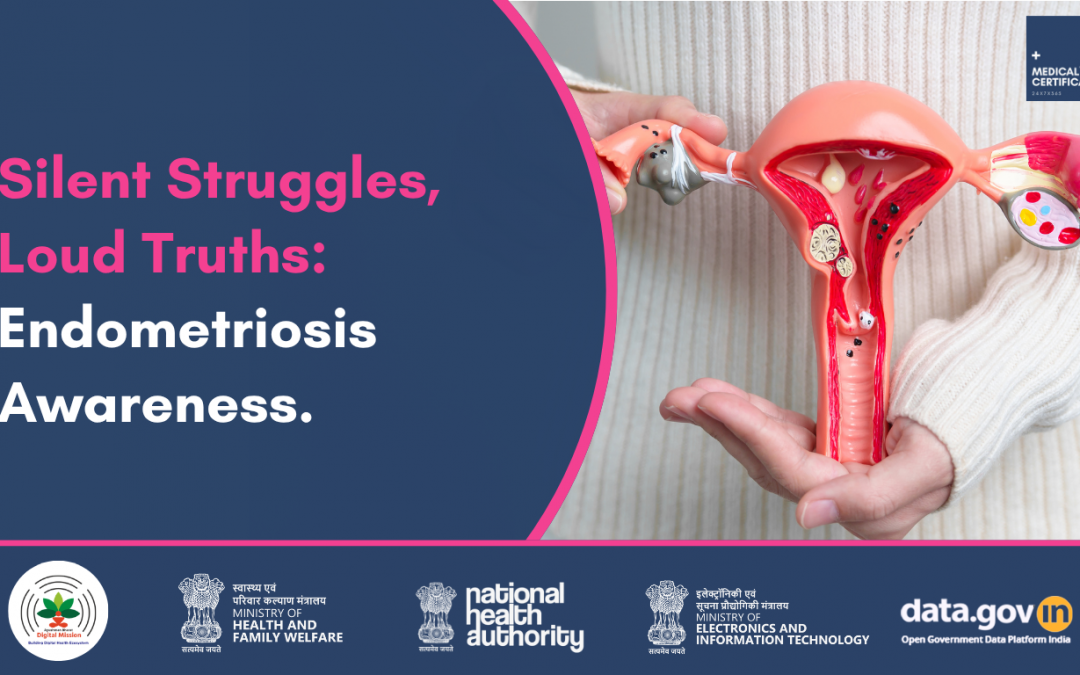They said that it was just a bad period.
I have lived many years feeling my life damaged by it,” she said.
Most women go about carrying endometriosis without knowing that they are exposed to it on a daily basis. On many occasions, it is improperly understood, shunned by others and at times misdiagnosed. Nonetheless, it is a true diagnosis. It’s painful. It does not, however, want to remain forgotten.
What is Endometriosis?
We are to speak about endometriosis; what it means, why it is so important and how it is better to give assistance.
Endometriosis is a long term painful chronic disorder which is characterized by endometrial-like growths (non-cancer) in areas other than the uterus and usually symptoms include chronic pelvic pain, painful periods and infertility.
The endometrium throughout the whole course of the monthly menstrual cycle acts like the so-called usual uterine lining and grows in size, separates and bleeds. However, unlike normal menstruation, the blood cannot be expelled and because of this, there are swellings, pain and scarring.
Symptoms: More Than Just Period Pain
Although most know it for severe pain, endometriosis involves far more symptoms than just feeling pain before a period.
Some of the usual signs are:
- Painful menstruation (dysmenorrhea)
- Sex becomes noticeably painful during or after the act (dyspareunia).
- Problems of chronic pelvic pain
- Feeling discomfort when urinating or passing stool (especially in the days before your period)
- Abnormal bleeding that is heavy or out of rhythm
- The inability to have children or get pregnant
- The symptoms consist of fatigue, bloating and nausea.
Someone may experience these symptoms in different ways and they can show up during adolescence or at a later stage of life.
How Common is Endometriosis?
According to the World Health Organization (2023), endometriosis is discussed in millions of women i.e., about 10% of the females in the reproductive stage have it i.e., nearly 190 million worldwide.
In India, the number of women with endometriosis stands at approximately 25 million but with low awareness and access to means to detect the condition, many unnoticed cases occur.
Why Awareness is Crucial
The fact that endometriosis pain is interior has led people to refer to it as an invisible disease, and over the years, medical practitioners did not handle it accordingly.
Some of them are very critical:
1. Most women usually require an average of 7 to 10 years after their symptoms began before they receive the correct diagnosis. This information was sourced out of an article by British Medical Journal published in 2016.
2. Failure to take pain seriously: Since most women are told that they are exaggerating about their pain or others claim that their pain is nothing, they tend to have a loss of trust in the medical profession.
3. The disorder has a direct impact on the way individuals carry out their daily lives, career, relationships and mental well being. One of the research papers in the field of Reproductive Health published in 2019 demonstrates that 80 percent of women with endometriosis reported that it impacted their work and social life.
4. Problems conceiving: Endometriosis causes infertility in about 50 percent of the women addressing the issue. When there would be the possibility of diagnosis at an early age, the fertility choices would not be lost.
How is Endometriosis Diagnosed?
There is not a straightforward blood test or scan for diagnosing endometriosis. Part of the diagnosis process is:
Pelvic exams:
- Ultrasound or MRI (to check for cysts or lesions).
- Laparoscopy is necessary to perform, since this is the only sure way to confirm it.
- For this reason, many women do not get an accurate diagnosis for a long time and are often given the wrong diagnoses like those of IBS or PCOS.
Options for Treatment:
Approaching Management, Not a Permanent Cure. There is as yet no permanent solution for endometriosis, but treatments exist to reduce associated discomfort:
Lifestyle Support includes anti-inflammatory diets, doing exercise on a regular basis, pelvic physiotherapy and getting mental health counseling
Breaking the Silence: What You Can Do
If you are feeling symptoms:
- Record when your period comes and how severe your pain is.
- Contact a doctor who treats conditions like endometriosis.
- Making sure your needs are heard matters. The fact that you’re in pain is not something to doubt.
If a close friend or family member has endometriosis:
- Believe them
- Don’t try to lessen what they feel.
- Give emotional and useful help
If you are a healthcare therapist, technician or specialist:
- Get to know how software can be presented beyond the usual style.
- An early check is necessary, especially for adolescents.
- If symptoms are very severe, suggest laparoscopy early on.
Voices from the Community
“I missed school for months and no one trusted that I wasn’t lying.”
— Rhea, 17, diagnosed at 21
“Endo stole my 20s. But getting diagnosed gave me the strength to take my body back.”
— Priya, 32
“It’s exhausting to be in pain all the time and still hear that it’s okay.”
— Ananya, 26
These words are not rare—no, they’re all around us. We just need to listen.
Let’s Change the Conversation
Endometriosis awareness is not about knowing the term; it’s about seeing the pain, believing women, and demanding better care.
Let’s get past telling girls and women to “just deal with it.” Let’s hear them, support them, and take action.
Your pain and your voice matters.
We’re here to hear you. And care for you.
Visit www.MedicalCertificate.in

